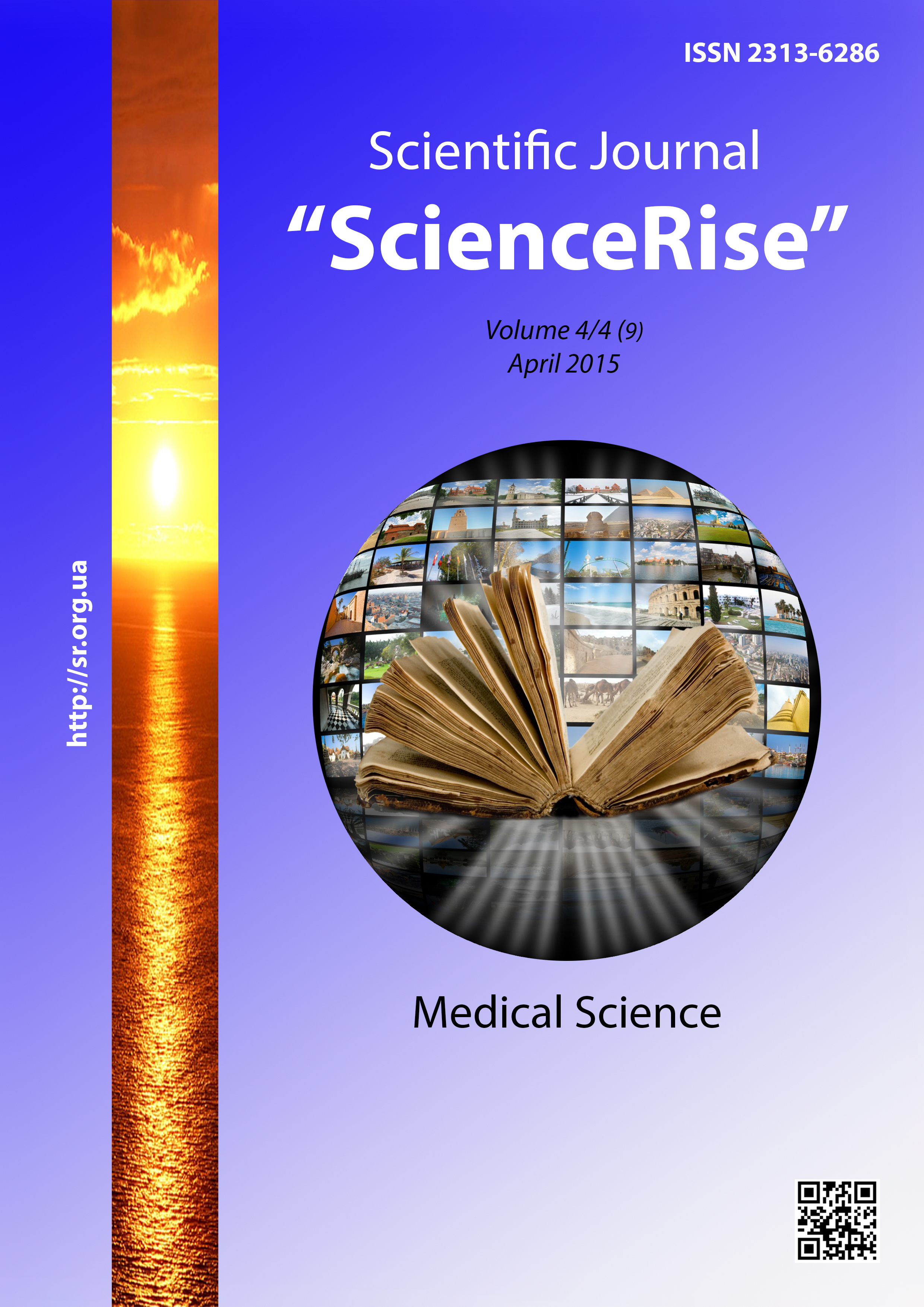Oxygen delivery and consumption during on-bypass cabg in htea and central analgesia
DOI:
https://doi.org/10.15587/2313-8416.2015.41604Keywords:
high thoracic epidural anesthesia, central analgesia, on–bypass coronary artery bypass grafting, oxygen delivery, oxygen consumptionAbstract
Objective. Despite some advantages, the use of high thoracic epidural anesthesia (HTEA) during on-bypass cardiac surgery may be discouraged by fear of adverse hemodynamic effects and associated disturbances of oxygen delivery.
Aim. To compare oxygen delivery and consumption during on-bypass coronary artery bypass grafting in settings of HTEA and central analgesia (CA).
Methods. 132 patients were assigned into two groups – study group (n=85), where the surgery was performed under HTEA and control group (n=47) - where the surgery was carried out under CA. Using data of transesophageal cardiac ultrasound and blood oximetry blood oxygen delivery (DO2), oxygen consumption (VO2), oxygen extraction coefficient (CEO2) were calculated at four stages of the surgery: after induction, sternotomy, cardiopulmonary bypass and at the end of the surgery.
Results. In the initial stages of the surgery DO2 and VO2 were reduced relative to reference values with a tendency to increase in the course of the operation and achievement of the normal or supernormal level (VO2, study group) in the final stage. The decrease was due to moderate hypodynamic circulation and hemodilution. After sternotomy DO2 in the study group was higher than that of the control: 356 (279; 458) vs 317±89 ml·min-1·m-2, (р=0,021). After cardiopulmonary bypass oxygen saturation of venous blood (SatvO2,) in the study group was 71 ± 9 % compared with 68 ± 10 % in the control group. At the end of the surgery SatvO2 in the study group was 71 (66; 75) vs 59 (53; 70) % in the control (р = 0,005) and oxygen tension of venous blood (РvО2) was correspondingly 39 ± 6 and 33 (30; 38) mm Hg (р = 0,027). Despite the decrease in DO2 and VO2, oxygen extraction indices - CEO2, pvO2, SatvO2, and remained within the reference range, except that of the control group at the end of the surgery. Furthermore, at no stage lactate rise or acid-base deviations was observed in the both groups.
Conclusions. In patients operated under high epidural anesthesia oxygen transport and consumption was better balanced compared to the patients operated under central analgesia
References
Nichols, D. Nielsen, N. D. (2010). Oxygen Delivery and Consumption: A Microcirculatory Perspective. Critical Care Clinics, 26 (2), 239–253. doi: 10.1016/j.ccc.2009.12.003
De Somer, F., Mulholland, J. W., Bryan, M. R., Aloisio, T., Van Nooten, G. J., Ranucci, M. (2011). O2 delivery and CO2 production during cardiopulmonary bypass as determinants of acute kidney injury: time for a goal-directed perfusion management? Critical Care, 15 (4), R192. doi: 10.1186/cc10349
Ranucci, M., De Toffol, B., Isgrò, G., Romitti, F., Conti, D., Vicentini, M. (2006). Hyperlactatemia during cardiopulmonary bypass: determinants and impact on postoperative outcome. Critical Care, 10, 167–170.
Mitter, N., Grogan, K., Nyhan, D., Berkowitz, D. E. (2011). Pharmacology of Anesthetic Drugs. Opioids in Cardiac Anesthesia. In Kaplan's Cardiac Anesthesia. The Echo Era (7th ed). Phil.:”Saunders Elsevier”, 223–224.
Chamchad, D., Horrow, J. C., Nakhamchik, L., Sutter, F. P., Samuels, L. E., Trace, C. L. et. al. (2010). The Impact of Immediate Extubation in the Operating Room After Cardiac Surgery on Intensive Care and Hospital Lengths of Stay. Journal of Cardiothoracic and Vascular Anesthesia, 24 (5), 780–784. doi: 10.1053/j.jvca.2010.04.002
Haanschoten, M. C., van Straten, A. H. M., ter Woorst, J. F., Stepaniak, P. S., van der Meer, A.-D., van Zundert, A. A. J., Soliman Hamad, M. A. (2012). Fast-track practice in cardiac surgery: results and predictors of outcome. Interactive CardioVascular and Thoracic Surgery, 15 (6), 989–994. doi: 10.1093/icvts/ivs393
Greisen, J. H., Nielsen, D. V., Sloth, E., Jakobsen, C. J. (2013). High thoracic epidural analgesia decreases stress hyperglycemia and insulin need in cardiac surgery patients. Acta Anaesthesiologica Scandinavica, 57( 2), 171–177. doi: 10.1111/j.1399–6576.2012.02731.x
Gurses, E., Berk, D., Sungurtekin, H. (2013). Effects of high thoracic epidural anesthesia on mixed venous oxygen saturation in coronary artery bypass grafting surgery. Medical Science Monitor, 19, 222–229. doi: 10.12659/msm.883861
Downloads
Published
Issue
Section
License
Copyright (c) 2015 Сергей Николаевич Гриценко, Віталій Олексійович Собокарь

This work is licensed under a Creative Commons Attribution 4.0 International License.
Our journal abides by the Creative Commons CC BY copyright rights and permissions for open access journals.
Authors, who are published in this journal, agree to the following conditions:
1. The authors reserve the right to authorship of the work and pass the first publication right of this work to the journal under the terms of a Creative Commons CC BY, which allows others to freely distribute the published research with the obligatory reference to the authors of the original work and the first publication of the work in this journal.
2. The authors have the right to conclude separate supplement agreements that relate to non-exclusive work distribution in the form in which it has been published by the journal (for example, to upload the work to the online storage of the journal or publish it as part of a monograph), provided that the reference to the first publication of the work in this journal is included.

